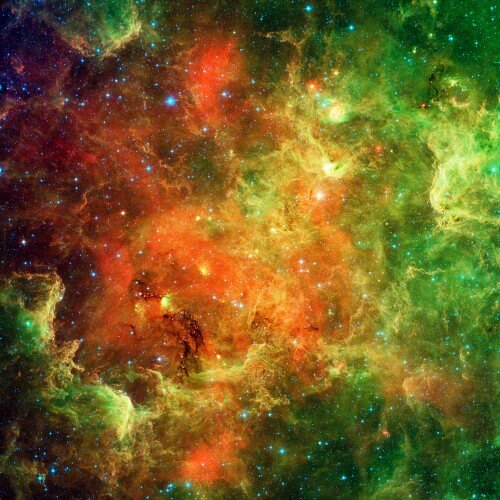A web artist created a video depicting a journey through the center of the Milky Way in eight minutes using 400 images from the Spitzer Space Telescope
A web artist known as daveachuk used 400 images taken by the Spitzer Space Telescope to create this high-resolution journey. In the high-quality version of the video, it is 4K technology at 60 frames per second.
Within the hidden depths of our galaxy are magnificent landscapes that are invisible to the human eye.
“Take seven minutes to wade through 12 gigapixels of data from the Spitzer Space Telescope's infrared sensors. These images were processed by computer as well as manually to simulate a three-dimensional flight in the center of the Milky Way, to a moment of music by the guitarist duo Hammock." He suggests on the YouTube video page andOn his site where he sells for two dollars a high-resolution copy of the video.
Readers of the science site are familiar with the Spitzer Space Telescope, but in the general public it is less well known, certainly less famous than the Hubble Space Telescope. However, Spitzer is one of the best telescopes that photographed the universe in the infrared range, revealing space at wavelengths that are almost invisible to the human eye. Earth's atmosphere blocks most infrared radiation so it takes a sophisticated space telescope like Spitzer to observe it. Apart from that, in the center of the Milky Way and on the way from there to the solar system, there are clouds of dust that interfere with observing what is happening in it in the wavelengths of the visible spectrum, on the other hand, they are transparent for observation in infrared light.
As we know, in the center of the Milky Way, as in every galaxy known to us, there is a huge black hole, and it affects its surroundings.

"I believe that the wealth of good quality scientific data is not appreciated enough". Daveachuk writes. "I believe that many exciting things can be done with the scientific data even if it is not for educational purposes but to provide inspiration. I believe that giving the public a glimpse of all the accumulated information is a good way to make them more aware of the planet and the universe and their place within it, and that their worldview will be a little better."
"But more importantly, I'm a geek of the latest technologies and like to do fun things, I'm a maker and I like to use all the software and hardware like others like to draw. I think it's because I don't know how to draw."
More of the topic in Hayadan:
In the center of the Milky Way, the supernova dust factory was revealed
The awakening dragon - the black hole at the center of the galaxy erupted 2 million years ago
A work of art by nature - Spitzer and Hubble jointly photographed the Orion Nebula

2 תגובות
Love, update on the Soyuz spaceship if you can